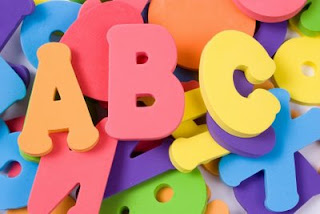Teaching a Child to Read
I've been hesitant to post a post on teaching reading, because I am by no means an expert in the subject; however, a dear friend reminded me that we read these posts to follow along the journeys of fellow homeschool mothers. So, I am posting another part of my journey, and I hope that in some way it might help and inspire you in your own journey.
Teaching a child to read can seem an intimidating pursuit, but in truth it is a process of building a foundation. One brick at a time...however quickly or slowly the child progresses. Some children will be ready to learn to read at age 3 while others will not be ready until age 7. After one milestone is reached, another can be initiated. If the child shows no progression, there is no need to force them through the stage he is on.
There are many different resources and curricula for teaching beginning reading and phonics. Personally, I don't think it is necessary to spend a lot of money to begin this process. Here is what has worked for me in the past.
1. After a child has learned the ABC Song, begin teaching them to identify the letters by name. This can be done is a variety of ways: using manipulatives such as refrigerator magnets, using flashcards, etc. Just work on this a few minutes each day, and your child will in time learn the letters by name. If using flashcards, try to find some that have the letter only instead of a letter/picture combo so the child is able to identify that you are naming the letter. Start by just going through, showing the letter and naming it.
Montessori utilizes the three-period lesson. In this situation you could employ this method with the letters your child is having most difficulty learning: (you would have placed two flashcards on the table, for instance "A" and "B") 1)Point to the "A" card and say, "This is an 'A.'" Point to the "B" card and say, "This is a 'B.'" 2) Ask the child, "Can you point to the 'B'?" If they are unable, repeat the first stage again. If they point to the "B" proceed by asking, "Can you point to the 'A'?" 3) Point at the "A" and ask, "What is this?" This is a very hard leap to make for the child, so don't be surprised if they can easily point to the proper letter when asked, but cannot name it. Do not belabor the process, move through it and continue with other letters.
2. Teach the child the letter sounds. This can also be achieved in a myriad of ways. I would use the primary tool you chose to teach the letter names. Some people choose to use phonogram cards like those that go with the Spell to Write and Read program. These cards introduce all of the sounds the letters make at once. I have these cards, but what we did was intially introduce only the short vowel sounds instead of both long and short at the same time. I don't know which way is actually best, though.
3. Teach the children that five of the letters of the alphabet are vowels--a, e, i, o, u--and all the other letters are consonants. Explain that "y" will sometimes act as either a vowel or a consonant. All of this is verbiage that will prepare them for future steps in reading.
4. Once the child has learned all of the letter sounds you can begin teaching him to blend three letter words. This again can be done using flashcards or magnetic letters. Place three letters down on the table or floor that spell a word, for instance "cat." Point to the "c" and make the sound, working through the entire word this way. Help the child to point to each letter and make the appropriate sound. The ability to blend the word after making the individual sounds is a challenging next step for the child. Often, children will lead with the last consonant sound they hear, for example saying "tac" instead of "cat." Don't panic if this happens as it is very common. Understand that your child will not be able to progress to this step until they are developmentally ready, so encourage them, but resist pushing. When they are ready, they will make the leap into reading.
5. At this point, if the child is already writing, you can begin a program like Primary Phonics. If they have less writing skills, a program by the same publisher is Explode the Code. If the child is still learning writing skills, utilize the magnetic alphabet to have them form words. You can print picture cards from this Montessori site (pink cards) and encourage the child to pick a matching letter for each letter sound he hears in the word. Montessori has the Moveable Alphabet for this very purpose. You can print your own moveable alphabet here.
These are just the beginning steps of a process that will continue and develop over years.
Here are some teaching reading resources that others have used and enjoyed--and be sure to check out the "Look Inside" feature to see the pages and get a feel for the program:
The Ordinary Parents Guide to Teaching Reading by Jessie Wise and Sara Buffington
Teach Your Child to Read in 100 Easy Lessons by Engelmann, Haddox and Bruner



Comments